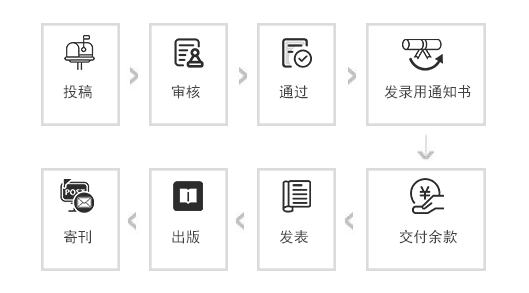TURKISH JOURNAL OF BOTANY



- 中国知网数据库(CNKI)全文收录期刊
- 中国核心期刊(遴选)数据库收录期刊
- 中国万方数据库全文收录期刊
- 中国维普科技期刊数据库收录期刊
- 中国龙源数据库全文收录期刊
- 中国期刊网全文收录期刊



中国高校科技期刊研究会第9次会员代表大会在北京召开,中宣部出版局副局长张怀海、教育部科学技术与信息化司一级巡视员张国辉等领导出席会议并发表..
英文简介:The Turkish Journal of Botany is published electronically 6 times a year by the Scientific and Technological Research Council of Turkey (TÜBİTAK) and accepts manuscripts (in English) covering all areas of plant biology (including genetics, evolution, systematics, structure, function, development, diversity, conservation biology, biogeography, paleobotany, ontogeny, functional morphology, ecology, reproductive biology, and pollination biology), all levels of organisation (molecular to ecosystem), and all plant groups and allied organisms (algae, fungi, and lichens). Authors are required to frame their research questions and discuss their results in terms of major questions in plant biology. In general, papers that are too narrowly focused, purely descriptive, or broad surveys, or that contain only preliminary data or natural history, will not be considered (*). The following types of article will be considered: 1. Research articles: Original research in various fields of botany will be evaluated as research articles. 2. Research notes: These include articles such as preliminary notes on a study or manuscripts on the morphological, anatomical, cytological, physiological, biochemical, and other properties of plant, algae, lichen and fungi species. 3. Reviews: Reviews of recent developments, improvements, discoveries, and ideas in various fields of botany. 4. Letters to the editor: These include opinions, comments relating to the publishing policy of the Turkish Journal of Botany, news, and suggestions. Letters should not exceed one journal page. (*) 1. Raw floristic lists (of algae, lichens, fungi, or plants), species descriptions, chorological studies, and plant sociology studies without any additional independent approaches. 2. Comparative morphology and anatomy studies (that do not cover a family, tribe, subtribe, genus, subgenus, section, subsection, or species complexes with taxonomical problems) without one or more independent additional approaches such as phylogenetical, micromorphological, chromosomal and anatomical analyses. 3. Revisions of family, tribe, genus, subgenus, section, subsection, or species complexes without any original outputs such as taxonomical status changes, IUCN categories, and phenological and ecological analyses. 4. New taxa of all plants without any additional independent approaches such as phylogenetical, ecological, chromosomal, chorological and correlational analyses in addition to a detailed macro- and micro-morphological descriptions with quality field and microscopic illustrations of taxonomically important structures and identification key in the taxonomic group.New records of all plants without any additional independent approaches such as phylogenetical, ecological, chromosomal, chorological and correlational analyses in addition to a detailed macro- and micro-morphological descriptions with quality field and microscopic illustrations of taxonomically important structures and identification key in the taxonomic group may be accepted for peer review if they contain 3 or more new records or taxonomical status update, such as lectotypification, new combinations, transfers, revivals and synonyms.5. New taxa of algae, lichens, and fungi without any additional independent approaches such as phylogenetical, ecological, chromosomal, chorological and correlational analyses in addition to a detailed macro- and micro-morphological descriptions with quality field and microscopic illustrations of taxonomically important structures and identification key in the taxonomic group.New records of algae, lichens, and fungi without any additional independent approaches such as phylogenetical, ecological, chromosomal, chorological and correlational analyses in addition to a detailed macro- and micro-morphological descriptions with quality field and microscopic illustrations of taxonomically important structures and identification key in the taxonomic group may be accepted for peer review if they contain 5 or more new records or taxonomical status update, such as lectotypification, new combinations, transfers, revivals and synonyms.中文简介:(来自Google、百度翻译)土耳其植物学杂志每年由土耳其科学技术研究委员会 (t ü b İ tak) 以电子方式出版6次,并接受涵盖植物生物学所有领域 (包括遗传学,进化,系统学,结构,功能,发展,多样性,保护生物学,生物地理学,古植物学,个体发育,功能形态,生态学,生殖生物学和授粉生物学),所有组织水平 (分子到生态系统) 以及所有植物群和相关生物 (藻类,真菌和地衣)。作者必须根据植物生物学的主要问题来确定他们的研究问题并讨论他们的结果。一般而言,过于狭隘,纯粹描述性或广泛调查,或仅包含初步数据或自然历史的论文将不被考虑 (*)。 将考虑以下类型的文章: 1。研究文章: 植物学各个领域的原创研究将被评价为研究文章。2.研究说明: 其中包括有关植物,藻类,地衣和真菌物种的形态,解剖,细胞学,生理,生化和其他特性的研究的初步说明或手稿。3.评论: 对植物学各个领域的最新发展,改进,发现和思想的评论。4.给编辑的信: 其中包括与土耳其植物学杂志的出版政策有关的意见,评论,新闻和建议。信件不应超过一页日记。(*) 1.原始植物区系列表 (藻类,地衣,真菌或植物),物种描述,脉络学研究和植物社会学研究,而无需任何其他独立方法。 2。比较形态学和解剖学研究 (不涵盖具有分类学问题的家庭,部落,子部落,属,亚属,科,小节或物种复合体),而没有一种或多种独立的其他方法,例如系统发育,微观形态学,染色体和解剖学分析。3.科,部落,属,亚属,科,小节或物种复合体的修订,而没有任何原始输出,例如分类学地位变化,IUCN类别以及物候和生态分析。4.所有植物的新分类群,没有任何其他独立的方法,例如系统发育,生态,染色体,除了详细的宏观和微观形态学描述以及分类学组中分类学重要结构和识别关键的质量领域和微观插图外,还进行了相关和相关分析。 所有植物的新记录,而无需任何其他独立方法,例如系统发育,生态,染色体,除了详细的宏观和微观形态学描述以及分类学组中分类学重要结构和识别关键的质量领域和微观插图之外,如果它们包含3个或更多新记录或分类学状态更新,例如类型化,新组合,转让,复兴和同义词。5。藻类,地衣和真菌的新分类群,而无需任何其他独立的方法,例如系统发育,生态,染色体,除了详细的宏观和微观形态学描述以及分类学组中分类学重要结构和识别关键的质量领域和微观插图外,还进行了相关和相关分析。 藻类,地衣和真菌的新记录,而无需任何其他独立方法,例如系统发育,生态,染色体,脉络学和相关分析,除了详细的宏观和微观形态学描述以及分类学组中分类学重要结构和识别关键的质量领域和微观插图外,如果它们包含5个或更多新记录或分类学状态更新 (例如类型化),新的组合、转移、复兴和同义词。










英文简介:The Turkish Journal of Botany is published electronically 6 times a year by the Scientific and Technological Research Council of Turkey (TÜBİTAK) and accepts manuscripts (in English) covering all areas of plant biology (including genetics, evolution, systematics, structure, function, development, diversity, conservation biology, biogeography, paleobotany, ontogeny, functional morphology, ecology, reproductive biology, and pollination biology), all levels of organisation (molecular to ecosystem), and all plant groups and allied organisms (algae, fungi, and lichens). Authors are required to frame their research questions and discuss their results in terms of major questions in plant biology. In general, papers that are too narrowly focused, purely descriptive, or broad surveys, or that contain only preliminary data or natural history, will not be considered (*). The following types of article will be considered: 1. Research articles: Original research in various fields of botany will be evaluated as research articles. 2. Research notes: These include articles such as preliminary notes on a study or manuscripts on the morphological, anatomical, cytological, physiological, biochemical, and other properties of plant, algae, lichen and fungi species. 3. Reviews: Reviews of recent developments, improvements, discoveries, and ideas in various fields of botany. 4. Letters to the editor: These include opinions, comments relating to the publishing policy of the Turkish Journal of Botany, news, and suggestions. Letters should not exceed one journal page. (*) 1. Raw floristic lists (of algae, lichens, fungi, or plants), species descriptions, chorological studies, and plant sociology studies without any additional independent approaches. 2. Comparative morphology and anatomy studies (that do not cover a family, tribe, subtribe, genus, subgenus, section, subsection, or species complexes with taxonomical problems) without one or more independent additional approaches such as phylogenetical, micromorphological, chromosomal and anatomical analyses. 3. Revisions of family, tribe, genus, subgenus, section, subsection, or species complexes without any original outputs such as taxonomical status changes, IUCN categories, and phenological and ecological analyses. 4. New taxa of all plants without any additional independent approaches such as phylogenetical, ecological, chromosomal, chorological and correlational analyses in addition to a detailed macro- and micro-morphological descriptions with quality field and microscopic illustrations of taxonomically important structures and identification key in the taxonomic group.New records of all plants without any additional independent approaches such as phylogenetical, ecological, chromosomal, chorological and correlational analyses in addition to a detailed macro- and micro-morphological descriptions with quality field and microscopic illustrations of taxonomically important structures and identification key in the taxonomic group may be accepted for peer review if they contain 3 or more new records or taxonomical status update, such as lectotypification, new combinations, transfers, revivals and synonyms.5. New taxa of algae, lichens, and fungi without any additional independent approaches such as phylogenetical, ecological, chromosomal, chorological and correlational analyses in addition to a detailed macro- and micro-morphological descriptions with quality field and microscopic illustrations of taxonomically important structures and identification key in the taxonomic group.New records of algae, lichens, and fungi without any additional independent approaches such as phylogenetical, ecological, chromosomal, chorological and correlational analyses in addition to a detailed macro- and micro-morphological descriptions with quality field and microscopic illustrations of taxonomically important structures and identification key in the taxonomic group may be accepted for peer review if they contain 5 or more new records or taxonomical status update, such as lectotypification, new combinations, transfers, revivals and synonyms.中文简介:(来自Google、百度翻译)土耳其植物学杂志每年由土耳其科学技术研究委员会 (t ü b İ tak) 以电子方式出版6次,并接受涵盖植物生物学所有领域 (包括遗传学,进化,系统学,结构,功能,发展,多样性,保护生物学,生物地理学,古植物学,个体发育,功能形态,生态学,生殖生物学和授粉生物学),所有组织水平 (分子到生态系统) 以及所有植物群和相关生物 (藻类,真菌和地衣)。作者必须根据植物生物学的主要问题来确定他们的研究问题并讨论他们的结果。一般而言,过于狭隘,纯粹描述性或广泛调查,或仅包含初步数据或自然历史的论文将不被考虑 (*)。 将考虑以下类型的文章: 1。研究文章: 植物学各个领域的原创研究将被评价为研究文章。2.研究说明: 其中包括有关植物,藻类,地衣和真菌物种的形态,解剖,细胞学,生理,生化和其他特性的研究的初步说明或手稿。3.评论: 对植物学各个领域的最新发展,改进,发现和思想的评论。4.给编辑的信: 其中包括与土耳其植物学杂志的出版政策有关的意见,评论,新闻和建议。信件不应超过一页日记。(*) 1.原始植物区系列表 (藻类,地衣,真菌或植物),物种描述,脉络学研究和植物社会学研究,而无需任何其他独立方法。 2。比较形态学和解剖学研究 (不涵盖具有分类学问题的家庭,部落,子部落,属,亚属,科,小节或物种复合体),而没有一种或多种独立的其他方法,例如系统发育,微观形态学,染色体和解剖学分析。3.科,部落,属,亚属,科,小节或物种复合体的修订,而没有任何原始输出,例如分类学地位变化,IUCN类别以及物候和生态分析。4.所有植物的新分类群,没有任何其他独立的方法,例如系统发育,生态,染色体,除了详细的宏观和微观形态学描述以及分类学组中分类学重要结构和识别关键的质量领域和微观插图外,还进行了相关和相关分析。 所有植物的新记录,而无需任何其他独立方法,例如系统发育,生态,染色体,除了详细的宏观和微观形态学描述以及分类学组中分类学重要结构和识别关键的质量领域和微观插图之外,如果它们包含3个或更多新记录或分类学状态更新,例如类型化,新组合,转让,复兴和同义词。5。藻类,地衣和真菌的新分类群,而无需任何其他独立的方法,例如系统发育,生态,染色体,除了详细的宏观和微观形态学描述以及分类学组中分类学重要结构和识别关键的质量领域和微观插图外,还进行了相关和相关分析。 藻类,地衣和真菌的新记录,而无需任何其他独立方法,例如系统发育,生态,染色体,脉络学和相关分析,除了详细的宏观和微观形态学描述以及分类学组中分类学重要结构和识别关键的质量领域和微观插图外,如果它们包含5个或更多新记录或分类学状态更新 (例如类型化),新的组合、转移、复兴和同义词。
来稿要求:
论点新颖、论证严密、论据充足、文字精练。论文字数:5000字符-8000字符为宜,图表也要计算在内,不包括英文摘要关键词。
标 题:
文章标题要言简意赅,30字以内。作者署名:署真实姓名,注明作者单位、单位所在省市和邮政编码。摘 要:要用第三人称概括全文,300字以内。
关 键 词:
用3~8个关键词术语反映论文主题。专用符号:名词、术语、数字、计量单位、标点符号和数学符号等,必须符合国家标准;外文人名、地名和术语需译成中文。
图表格式:
文中插图与表格放在相应正文之后,分别按出现顺序用图1、图2或表1、表2统一编号。插图应为黑白色,其序号、标题及注释居中放在图的下方,表格的序号及标题置于表格上方,表注放在表格的下方(建议:由于篇幅限制,除核心期刊外尽量不用或少用图表)。
正文注释:
采用尾注形式,注释号①,②,③等标在相应正文右上角。
章节体例:
章节标题为:一级标题不编号,用黑体居中排,二级标题不编号,用楷体放在相应的文字段首与正文空一字格接排正文。 三级标题分别用1.2.3.顺序编号。文中接排标题用(1),(2)编号。
参考文献:
参考文献置于正文之后,近5年的不少于3条,用[1],[2]……顺序编号,如文章中有内容需要解释请用尾注形式。参考文献不全者不能进入审稿阶段。{参考文献格式如下:(1)图书:作者.书名(版本)[M].出版所在地: 出版社,出版年:(1)页码.
(2)期刊:作者.题目[J].期刊名,年,卷(期):页码.
(3)电子参考文献:作者.题目[OL].(文章的发表日期).[本文引用日期].作者简介:来稿者请附个人简介,内容包括姓名(出生年—),性别,籍贯,民族,学历,工作单位,职称,研究方向,通讯地址,联系电话及电子信箱。
一般情况下,您将在3个工作日内收到审稿结果。如文章有很强的时效性,请说明需要最晚刊发时间。
| 论文编号 | 作者姓名 | 论文题目 | 录用情况 |
|---|---|---|---|
| TG251-13579 | 韩丽炘 孟涛 温娟娟 刘晓琴 | 基于互联网的CBL+TBL教学法在病理学实验教学中的应用 | 已录用 |
| TG251-13681 | 邹隆强 杨清余 钟鸿路 李正南 陈 | 医学运动康复联合消肿止痛方治疗急性踝关节扭伤临床研究 | 已录用 |
| TG251-13794 | 林雨慧 陈霄雯 郑颖彦 朱永凯 贾 | 基于SWOT模型的儿童专科医院临床研究发展策略分析 | 已录用 |
| TG251-13762 | 郑鸿雁 | 重复经颅磁刺激治疗肝脾不调型功能性肛门直肠痛的临床研究 | 已录用 |
| TG251-13891 | 袁召1 赵会谢2 赵海深3 | 真武汤治疗阳虚水泛型慢性心力衰竭患者的临床研究 | 已录用 |
| TG251-13536 | 王杰1 张蕾蕾2 | 血脂和载脂蛋白水平与分化型甲状腺癌及其病理学特征的相关性探究 | 已录用 |
| GD24-5203 | 单一青 高鹏慧 姚瑶 | 思维导图护理对宫颈癌患者行腹腔镜术后康复的影响 | 已录用 |
| GD24-5217 | 林秀娟 梁静文 刘美仙 陈惠贤 | 加速康复外科管理模式在胸腔镜肺段切除术患者围手术期护理中的应用效果 | 已录用 |
| GD24-5213 | 杨素雯 何洁芳 陈妙霞 廖景升 | 健康行为改变整合理论对于宫颈癌晚期放疗患者依从性及自我效能的影响 | 已录用 |
| GD24-5199 | 杨月惠 王凤婷 | 个体护理计划在心脏瓣膜置换手术围手术期患者中的应用 | 已录用 |
邮箱:cnkibianjibu@163.com
QQ:
扫码联系: